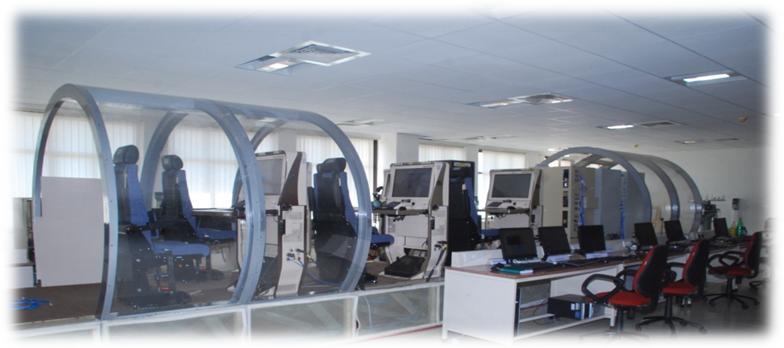India Closer To Developing it's own "Eye in the Sky"
| The video of the Embraer Test Flight with DRDO Radar |
 |
| The Embraer EMB-145 aircraft which will be modified to suit India's Eye in the Sky |
India amid challenging neighborhood, already participated in four wars with Pakistan, including one undeclared war and one war with China since the partition in 1947, as well as many border skirmishes and military stand-offs. Additionally, India has accused Pakistan of engaging in proxy wars by providing military and financial assistance to violent non-state actors. So India is pulling all it's resources to update and to equip it's defence forces with the Modern warfare. India is following a two prong approach, buying from the world players through defence deals with various countries and producing in-house by developing the skill bank and industry. The indiginizing effort now a days gained good momentum even though not up to the required extent. LCA tejas , Kaveri Engine , Medium Combat Air Crafts etc. are at various stages of development.
In th urge to develop advance technology in-house , India has moved a step closer to developing it's own Airborne Early Warning and Control System.
An airborne early warning and control (AEW&C) (or more commonly and historically an AWAC) system is an airborne radar system designed to detect aircraft at long ranges and control and command the battle space in an air engagement by directing fighter and attack plane strikes. AEW&C/AWAC units are also used to carry out surveillance, including over ground targets and frequently perform C2BM (command and control, battle management) functions similar to an Airport Traffic Controller given military command over other forces. Used at a high altitude, the radars on the aircraft allow the operators to distinguish between friendly and hostile aircraft hundreds of miles away.
India’s indigenous Airborne Early Warning & Control System (AEW&C), which is being built on a modified Embraer EMB-145 aircraft in Brazil, made its first flight on Dec. 6, as part of its first flight in Embraer facilities at Sao Jose dos Campos in Brazil, with about 1,000 mission system components provided by [the Defense Research Development Organization’s] Center for Airborne Systems. AEW&C aircraft are capable of detecting enemy aircraft or UAVs and relaying information to ground bases. The most critical mission systems component is the active, electronically scanned array radar developed by DRDO. The Indian AESA radar is the primary sensor for the indigenous AEW & C.
Various Laboratories and Firms Involved


The MISSION COMMUNICATION SYSTEM (MCS) for internal and external communication
The radar can look 240 degrees within a short time and has a range of 350 km; it can track more than 500 targets simultaneously. The DRDO is spearheading the indigenous AEW&C programme with the CABS as the nodal agency. The latter is executing it in association with DRDO laboratories such as the LRDE; the Defence Avionics Research Establishment (DARE), Bangalore; the Defence Electronics Research Laboratory (DLRL), Hyderabad; and the Defence Electronics Application Laboratory (DEAL), Dehradun. Each of these laboratories is developing subsystems for the AEW&C programme.
“The flight is a major milestone toward realizing the dream of [an] indigenous Airborne Early Warning and Control System, which will put India into a select club of countries,” said V.K. Saraswat, scientific advisor to the defense minister and DRDO chief .
 |
| Israeli Phalcon |
Meanwhile, the Indian air force (IAF) is interested in acquiring two more Airborne Warning and Control System (AWACS) aircraft based on the Russian IL-76 platform and the Israeli Phalcon AWACS Radar. India currently has three AWACS aircraft and will receive two more by the middle of next year, while AEW&C aircraft will now undergo a full certification process over the next two years. In May 2009 , India received it's first AEW&C aircraft Phalcon.
“Here, the mission systems developed by various DRDO labs will be integrated with these aircraft,” Saraswat says. “Currently, these systems are undergoing ground integration and evaluation ... in Bengaluru.” Two of these systems will be delivered to the IAF after detailed test and evaluation by 2013.
There are two levels of operation here. In the first, the aircraft is modified in Brazil and the DRDO sent all the components, including the antenna, the AAAU with dummy electronics, and so on for integration with the aircraft. M/s Embraer Engineers mounted them on the aircraft and configured it for the flight. Embraer's engineers also received the air-worthy certification for the aircraft from the Agencia Nacional de Aviacao Civil, the Brazilian agency responsible for overseeing the safety of civil aviation in that country. In the second level, when the three aircraft with the Indian AEW&C systems are delivered in India after flight trials in Brazil, the remaining mission systems will be integrated inside the cabin and the IAF will do the flight trials again. The CABS will be responsible for having the AEW & C system certified for mission functions and flight safety in association with the IAF and the Centre for Military Airworthiness and Certification (CEMILAC), Bangalore.
 Ground Test Rig - Except the actual flying conditions (like vibration, altitude, pressure, etc),
remaining all can be simulated here
Ground Test Rig - Except the actual flying conditions (like vibration, altitude, pressure, etc),
remaining all can be simulated here
Massive facilities that the CABS has built on its premises include an anechoic chamber, a lightning test facility, and highly accelerated life testing (HALT) and highly accelerated stress screening (HASS) facilities. The anechoic chamber is a huge shielded facility, 35x15x18 metres. The AESA radar is tested here. In the lightning test facility, artificial lightning of four million volts is created to test the effect of lightning on aircraft and ensure that the electronics inside are not affected.
For more Details - Visit CABS Official Website
